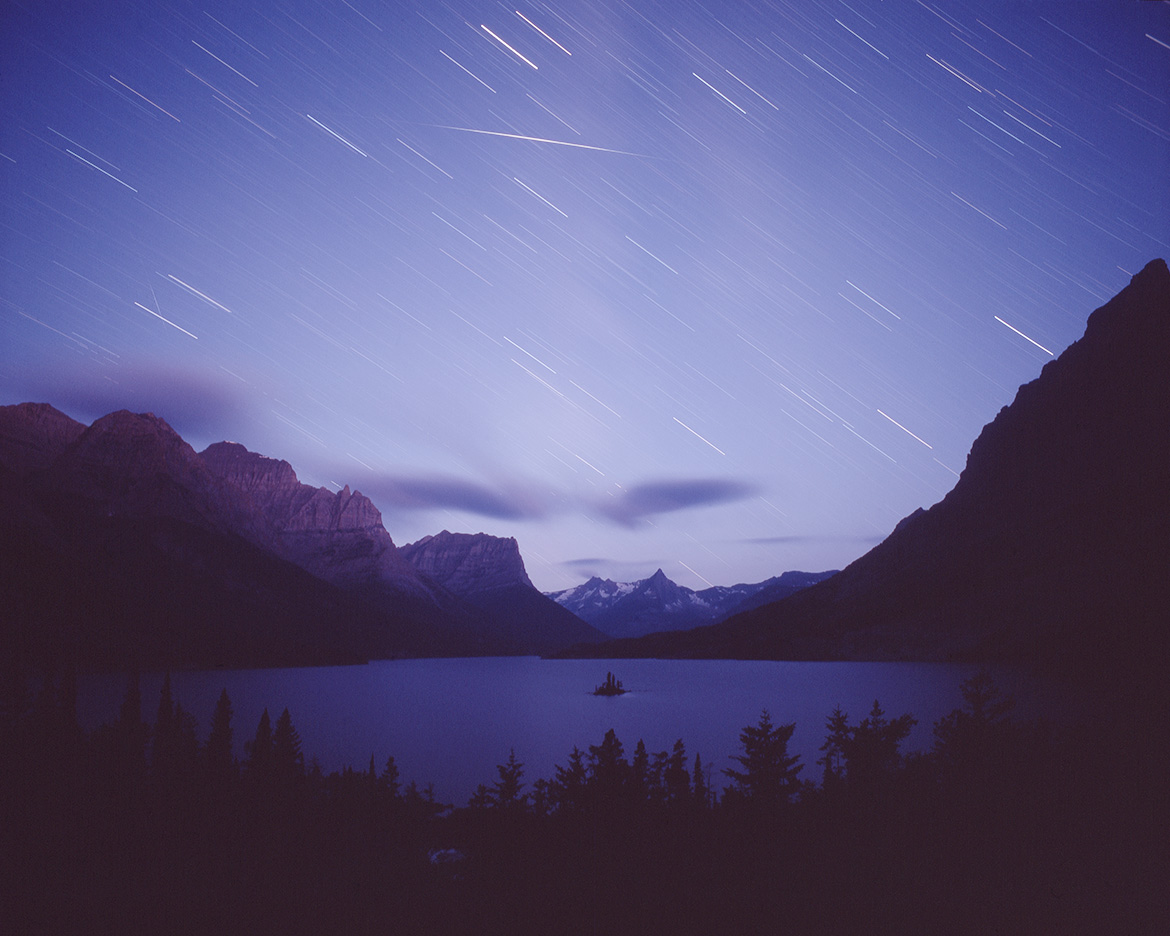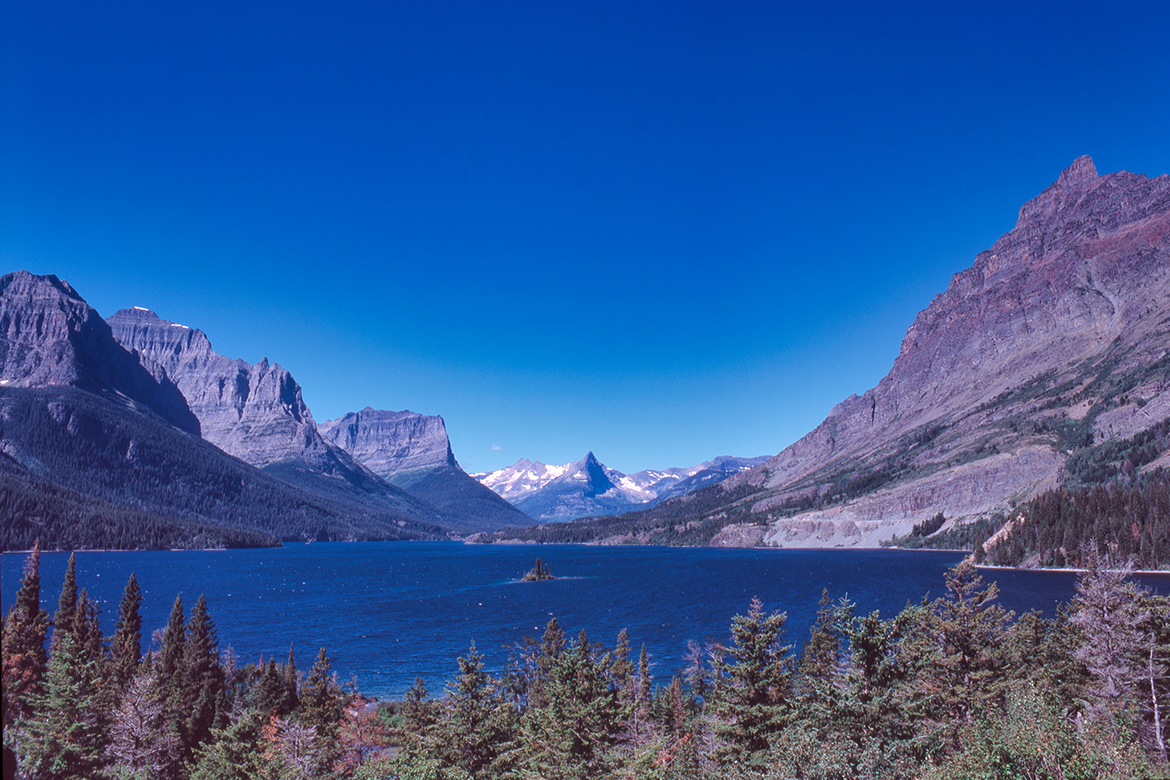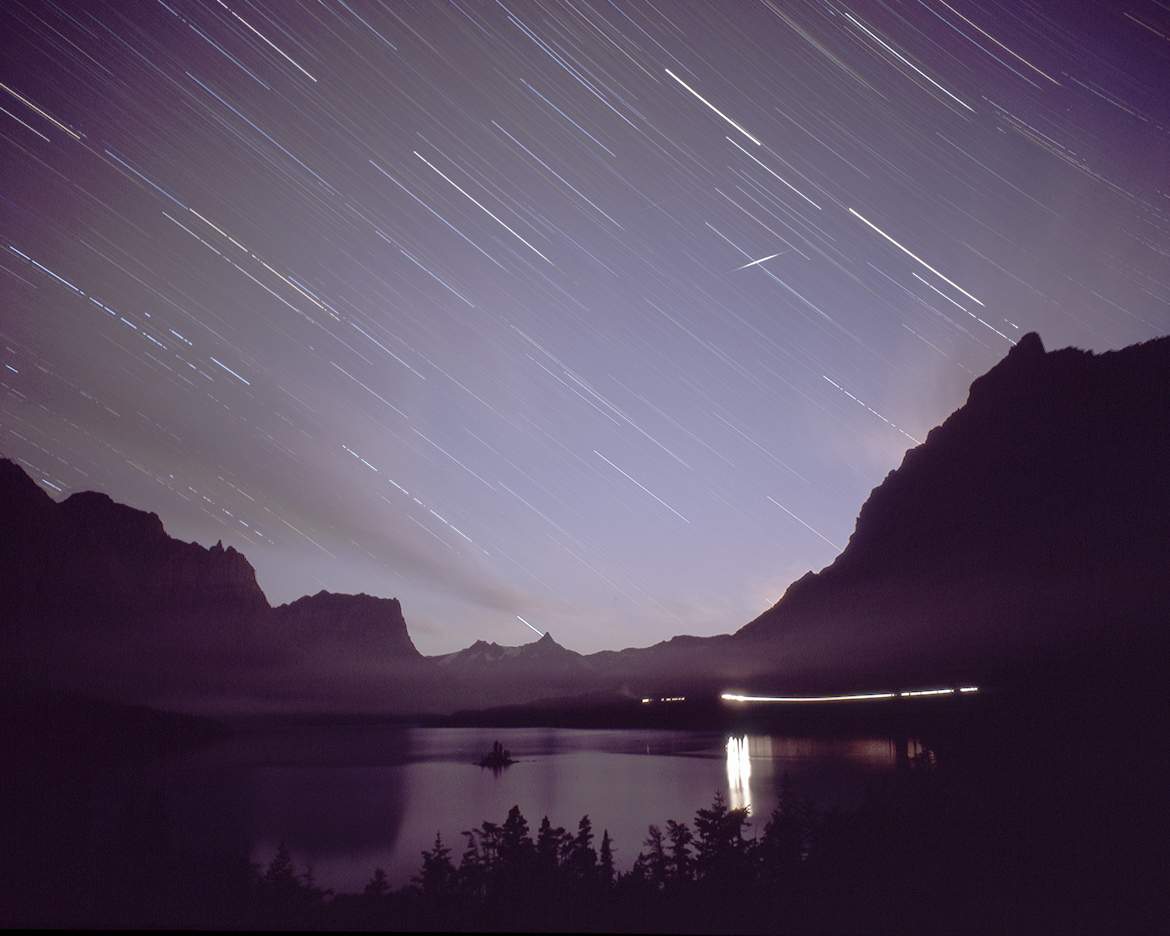
There are many iconic views of beautiful scenery in our country. Some are identified by “scenic viewpoint” highway signs where the engineers designing and building the routes through the American landscape couldn’t help but be impressed and decided to make it easy for drivers to pull out to stop and enjoy the view too.
At the time it was built in the 1920’s and 30’s, Glacier Park’s Going-To-The-Sun road was an engineering marvel. An easier and less expensive route up and over Logan Pass had been proposed, but the National Parks Director at the time, Stephen Mather, insisted on the more difficult but much more rewarding route that provided spectacular views of the streams, waterfalls and mountains as the road wound its way to the top.
The designers were no doubt aware that the entire route was a “scenic viewpoint”. But the road clearances were only enough for two narrow lanes traversing the edge of the mountain. Still, there were occasional openings where a parking area could be carved out, and one of them provided an overlook of St Mary Lake through a stand of lodgepole pines. A photogenic island surrounded by the majesty of glacier-cut peaks has made it a location where thousands of photographers have pounded the ground bare as they positioned themselves to take this iconic image of Glacier Park.

I too have taken pictures from this site, but always during the day. After spending most of the night at Logan Pass, as I drove down the valley with the intent to find a campground to pitch my tent after a long day, I encountered the turnout for the Wild Goose Island overlook. There was a distinctive brown park sign with a camera on it that was essentially saying: “Stand here to take your vacation picture!”
I hadn’t planned to take more long duration exposures that night, but there I was, with the famous scene in front of me and a starry night above. I set up my cameras once again. It was unusual to be there alone. Usually there is a crush of tourists politely vying for and taking turns at the spots with unobstructed views. I was able to claim all of them, select my favorites, and extend my tripods with impunity. There was no pressure to get the shot and move on for the next person, I was the only person.
I got the cameras mounted, composed and focused by 3:50 am. I opened the shutters and stepped back to let the film do its job accumulating starlight. I had regained my night vision and simply watched the scene. At this hour even the sporadic late-night drivers had quit the road. The Milky Way flowed overhead, and as I watched, an Iridium satellite flare built up, moving slowly across the sky as its brightest object for about ten seconds, then faded back to its invisible path. I wondered how it would appear on the film that was integrating the scene.
I also noticed some clouds building up to the west. The fact that I could see them indicated that there was enough light to do so. The sky was no longer completely dark, it had exited the status of astronomical twilight and entered nautical twilight, the beginning of a new day. I realized that my star trail images were now at risk—I would be unable to make a truly long exposure to capture them, there just wasn’t enough night remaining! To avoid having the exposures washed out by a brightening sky, I cut the exposures short at thirty minutes. I would have to come back when there was more nighttime available.
And I did come back. The next day brought tremendous rainstorms; my tent was blown hard enough to pull its tent stakes up, leaving me inside as its sole anchor. Despite this and the loud flapping of tent fabric, I was able to get some sleep and by the time I emerged, the wet and windy disruption was over. The skies had nearly cleared, and I would be ready to try again at the overlook as twilight ended and astronomical darkness set in.
This time however other things interfered. The late-night drivers were active again, their headlights suddenly popping out of a tunnel and then creating a streak along the route carved from the mountain wall. I would have to live with this photographic “feature”, as it was likely to happen sometime during any 60-minute exposure interval.
But it didn’t matter: fog was building up in the valley and soon the vista and stars disappeared into a dark featureless haze. Unlike the previous night, which ended with the excess photons of encroaching daylight, tonight’s session ended by the complete atmospheric blocking of starlight. An uninterrupted nighttime portrait of Wild Goose Island would have to wait for another time.



Pingback: 3.4 The Quest for C-41 | Thor's Life-Notes